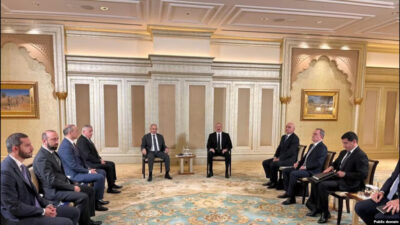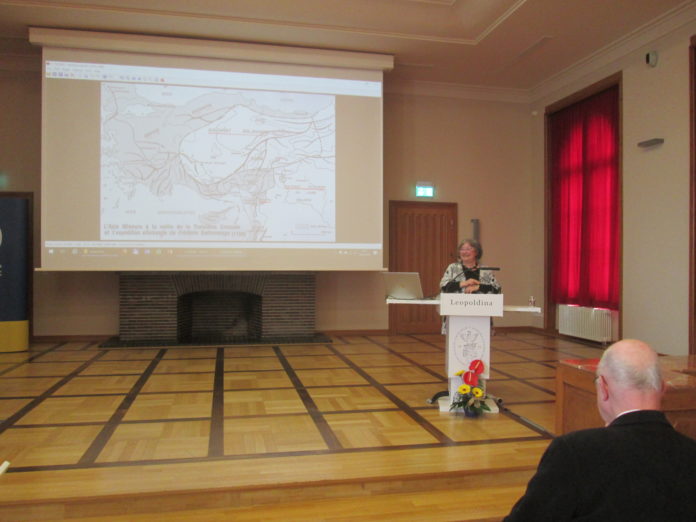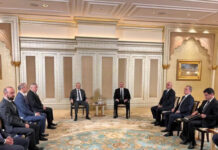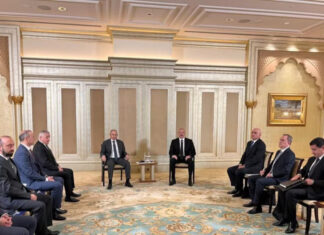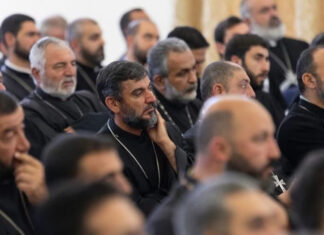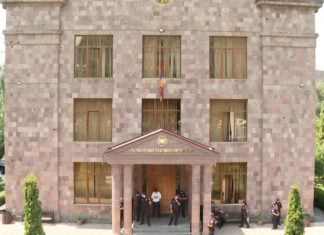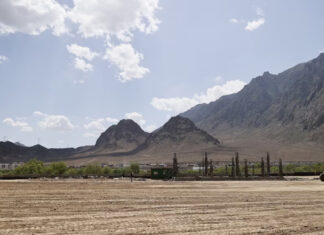HALLE, Germany — Eight hundred years ago Levon I, a king who left an indelible mark on Armenian history and culture, with respect to relations with other powers, temporal and religious, died. The German city of Halle marked the anniversary with a series of special events, coinciding with the 20th anniversary of the cultural agreement signed between the Federal Republic of Germany and the Republic of Armenia. On May 17, a cabinet exhibition opened at the Moritzburg state museum, titled, “Levon I (1187-1219): An Armenian King in the Hohenstaufen Crusader States,” followed by a festive concert by guitarists Stepan Galantryan and Emil Georgiev, a “Voyage of Songs through the Mediterranean Coasts.”
The following day, an international scientific conference took place, organized by the Mesrop Center for Armenian Studies at the Martin Luther University in Halle-Wittenberg, which is also celebrating its 20th anniversary. (https://mirrorspectator.com/2018/11/08/two-decades-of-armenian-studies-in-germany/)
Titled “The Armenian Kingdom on the Mediterranean: Cilicia in the International, Cultural and Political Context (On the Occasion of the 800th Anniversary of the Death of Levon I),” it brought together prominent scholars from the U.S., Armenia and France in the Leopoldina National Academy of Sciences. Greetings were delivered by the academy’s Vice President Prof. Gunnar Berg, Director of the Institute for Oriental Studies Prof. Cornelia Horn and Armenian Ambassador Ashot Smbatyan. A message was received from Aram I, Catholicos of the Great House of Cilicia, and Dr. Stefan Moeller read greetings from P. Frank Bayard, Grand Master of the Teutonic Order, an order established in the 12th century in the Holy Land.
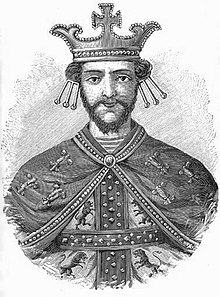
Diplomacy, Foreign Policy and Church Relations
It was the political side of Levon I’s activities that occupied the opening session, introduced by Mesrop Center director Prof. Armenuhi Drost-Abgarjan. Claude Mutafian (Paris) presented Levon the Great as “a brilliant diplomat.” Finding himself at the head of the Rubenid dynasty in Cilicia, which was sought after by both the Christian and Muslim neighbor states, he deemed the best means of consolidating his position would be through the establishment of a kingdom, one recognized by the surrounding powers. In pursuit of this, he turned to Henry VI Hohenstaufen and on January 6, 1198 in Tarsus, under the aegis of the Holy Roman Empire, was crowned King Levon I of Armenia. The Byzantine emperor recognized him but before he could gain comparable status from the Papacy in Rome, he had to settle the controversial issue of the alleged schismatic character of the Armenian church and its autocephalic character. This Levon I succeeded in doing, by organizing his clergy to accept papal conditions in word only, and the union of the churches became a fact. In an effort to subdue hostilities in Antioch and the Hethum dynasty, he tried his hand at matchmaking diplomacy, but was not always crowned by success.
Azat Bozoyan (Yerevan) examined the direction of Levon’s multifaceted foreign policy vis-a-vis European powers as well as the Crusader states, through which he hoped to protect Cilicia’s independence. In his church policy with Rome, he acted in accord with the Catholicos, whose See however lay outside Cilicia. From 1193 on, he sought to set up a state order along the model of the Byzantine system, whereby Cilician royal power would be based on the spiritual structures of the Armenian church, which at the end of the 12th century stretched from Greater Armenia to the Balkans and Egypt. Bozoyan pointed to the coins and royal seals issued in 1998 as proof of this; here Levon is “King of Armenia,” “By the Grace of God,” “King of all Armenians” and “Dei et romani imperii gracia rex Armenie.”
